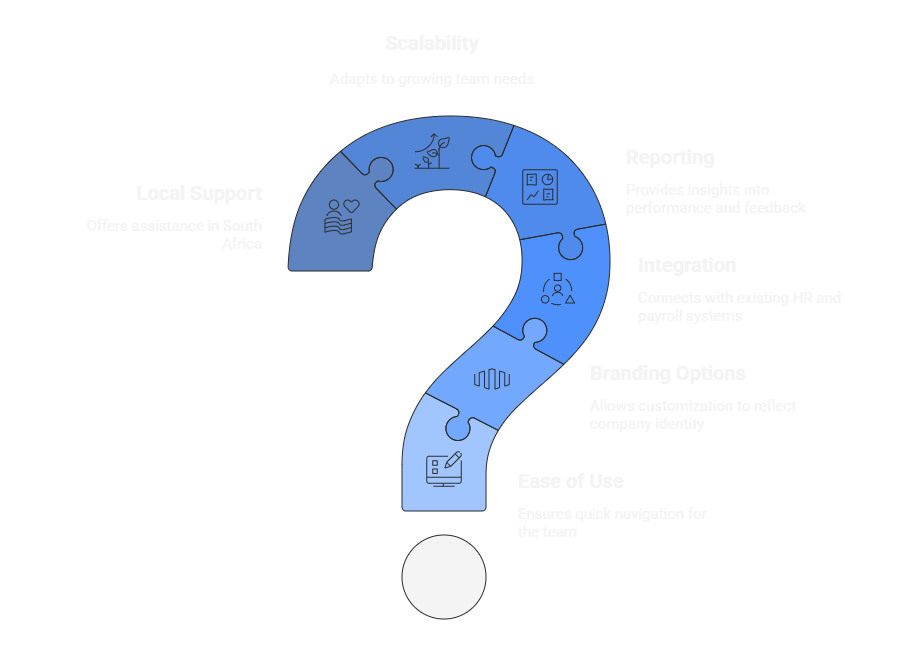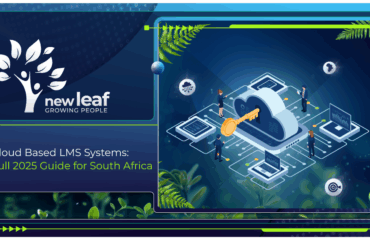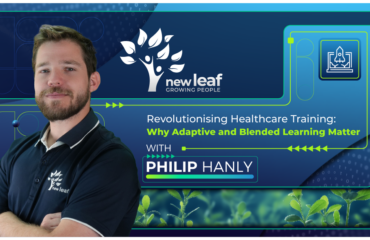
Why your workforce needs modern mobile first learning solutions and how a mobile lms may be the solution.
Imagine you are sitting in traffic on the way to work. You have a few minutes to spare as the robots turn green and the traffic ahead starts moving. Instead of scrolling aimlessly, you open your company’s mobile lms app and watch a quick video about customer service. By the time you step into the office you have learned something useful. That’s mobile learning – education that fits around life rather than forcing people into a classroom.
What Is a Mobile LMS?
A mobile learning management system (LMS) is like a regular LMS that has been designed for phones and tablets. It still stores courses, quizzes and certificates, but everything is easy to read on a small screen. Lessons are shorter and you can tap your way through them while standing in a queue or riding a bus. Learners can watch videos, read short articles, take quizzes and see their progress from anywhere.
Key features include:
- Responsive design – The interface adjusts itself to fit any phone or tablet.
- Offline mode – You can download lessons and study without the internet.
- Notifications – Small pop‑ups remind you to finish a course.
- Short lessons – Each module takes just a few minutes, so you never feel overwhelmed.
- Games and rewards – Points, badges and leaderboards make learning fun.
- Progress reports – Managers can check who has completed training and where extra help is needed.
Why Mobile LMS Learning Matters
People carry their phones everywhere. Because of this, mobile learning is becoming the main way many people learn. Here are some numbers that show why:
- Almost half of Coursera learners use their phones to take courses.
- In low‑income communities, two out of three households own a mobile phone.
- 98 percent of companies are already using online training.
- The corporate e‑learning market was worth US$ 141 billion in 2022 and is growing at about 15 percent a year.
- The global mobile learning market could reach US$ 287 billion by 2030, growing at 24.78 percent each year.
- In the Asia–Pacific region about 60 percent of online education is delivered via smartphones, and mobile use is around 85 percent.
- In the Middle East and Africa region, mobile learning adoption is about 52 percent, cloud‑based learning is about 58 percent and about 22 percent of systems include AI.
Africa’s own eLearning market shows why mobile matters. The continent’s education technology sector was valued at US$ 3.5 billion in 2024 and could grow to US$ 7.69 billion by 2033. Nearly 60 percent of Africa’s people are under 25 and phones are the main way young people are online. With so many young people and limited classrooms, mobile learning bridges gaps in teachers and infrastructure.
Why South Africa Needs Mobile Learning
South Africa is a big country with many people living far from cities. Workers in mines, farms and health clinics often have to travel long distances. A mobile learning LMS lets them study wherever they are. When your workforce is young and spread out, training on phones is practical and affordable.
Here are some reasons mobile learning makes sense:
- Reach remote teams – Crews in rural areas can learn without visiting a training centre.
- Fits busy lives – People can learn during lunch breaks or while commuting.
- Saves money – Digital lessons cut travel and printing costs. Studies show that every US$ 1 spent on training returns US$ 30 in productivity and reduces learning time by 40–60 percent while boosting engagement by 18 percent.
- Protecting the environment – Elearning reduces carbon emissions by 85 percent and energy use by up to 90 percent.
Platforms Recommended by New Leaf
New Leaf Technologies partners with several mobile‑friendly platforms. Each platform has its own strengths. Here is a quick overview with links to learn more.
Talent LMS
Talent LMS lets you build courses quickly. You can drag and drop videos, slides and documents to create lessons. An AI engine helps you generate new content. Learners can download lessons and study offline; their progress syncs when they reconnect. The platform also offers built-in video calls and mobile reminders. See New Leaf’s Talent LMS page for pricing and features.
eFront LMS
eFront is a strong platform for companies that need privacy and flexibility. It lets you host training on your own servers and connect with existing software. You can add your logo, adjust colours and build custom reports. Because eFront is flexible, it grows as your company grows. Learn how African companies use it for compliance and data protection on New Leaf’s eFront LMS page.
Continu LXP
Continu is a learning experience platform that blends training and performance. It covers onboarding, leadership courses, sales training and compliance. Continu customises each learner’s path and works well on phones. It also offers detailed reports and connects with HR systems. Visit New Leaf’s Continu LXP page for more details.
More Tools on New Leaf’s Website
New Leaf also offers solutions such as aNewSpring, Articulate and Learning Experience Design services. These tools help companies build engaging content that works across devices. You can explore these on the Learning Products page and the Learning Services page.
How to Choose a Mobile LMS
Selecting the right platform can feel overwhelming. Use this simple checklist to compare options:
- Ease of use – Can your team navigate the interface quickly?
- Branding options – Can you add your logo and colours to make it feel like your own?
- Integration – Does it connect to your HR or payroll software?
- Reporting – Can you see completion rates, quiz scores and feedback?
- Scalability – Will it work for a small team and still meet your needs as you grow?
- Local support – Is there help available in South Africa if something goes wrong?
If you are new to LMS systems, New Leaf’s What is an LMS? The article explains the basics and can help you decide whether a mobile‑first or blended approach suits your needs.

Steps for a Successful LMS Mobile App Roll‑out
Rolling out a new mobile LMS is easier with a plan. Follow these steps:
- Run a pilot – Start with a small group and collect honest feedback. This will highlight any issues before full launch.
- Train managers – Show leaders how to assign courses and read reports. When managers are confident, they encourage their teams.
- Plan content – Release new lessons regularly. Keep them short and interesting.
- Encourage participation – Celebrate learners who finish courses. Share success stories to inspire others.
- Review and adapt – Use completion and quiz data to improve your courses. Remove outdated material and add new content.
Tips for Continuous Learning
Mobile learning works best when it becomes part of daily life. Keep your courses fresh and fun with these ideas:
- Quick challenges – Use small games or daily questions to keep learners engaged.
- Share insights – Encourage people to post tips or videos in a social feed.
- Peer coaching – Pair up learners so they can help each other.
- Reward progress – Give out badges, points or certificates when milestones are reached.
- Update content often – Add new articles and videos; remove outdated ones.
- Ask for feedback – Invite suggestions on how to improve the learning experience.
Stories from the Field
Real stories help illustrate how mobile learning works in practice. Here are three examples:
Solar technicians in the Eastern Cape were trained to install new panels using a mobile LMS. During a rainstorm they sat in their truck and completed safety lessons. After the storm they used their new knowledge to teach community members about solar power. Their supervisor joked that the team learned more while waiting out the rain than in a whole day’s workshop.
In Johannesburg, a large retail chain launched a mobile quiz game to teach staff about new products. Employees compared scores over lunch. One store doubled its sales within three months because staff were more confident with product knowledge.
At a Cape Town call centre, managers struggled to keep agents up to date on new regulations. They replaced long workshops with short mobile lessons. Within a few months, compliance scores improved by more than 30 percent, and agents reported that they preferred learning at their own pace.
Case Study: Mobile Learning at a Logistics Company
A national logistics company in South Africa wanted to reduce training costs and improve driver safety. They adopted a LMS mobile that delivered five‑minute lessons on safe driving, customer service and vehicle care. Drivers completed lessons on their phones while waiting for shipments. After three months, incidents dropped by 20 percent, and customer satisfaction scores went up. Management also saved money on travel and accommodation because they no longer had to bring drivers to a central location for training. The company now plans to add sustainability modules to teach drivers about eco‑driving, proving that small lessons can lead to big changes.
Looking Ahead
The future of mobile learning is bright. New tools such as artificial intelligence will recommend courses based on each learner’s progress. Augmented reality will let people practise hands‑on skills using just their phones. As 5G networks spread across Africa, video streaming will improve even in remote regions. Companies that invest in mobile learning now will have flexible, skilled teams ready for whatever comes next.
FAQ
How is a mobile LMS different from a regular LMS? A traditional LMS is built for desktops. It works well for people who sit at a computer all day but not for field workers. A mobile LMS adapts to small screens, lets you download lessons for offline use, delivers short lessons and syncs your progress across devices.
Do I need fast internet to use mobile learning? Not always. Many platforms let you download content to your phone. You can learn offline and then sync your progress when you reconnect to Wi‑Fi or mobile data.
How often should we update our courses? Review your material at least once a year or whenever rules change. Updating content keeps it useful and shows that you care about quality.




